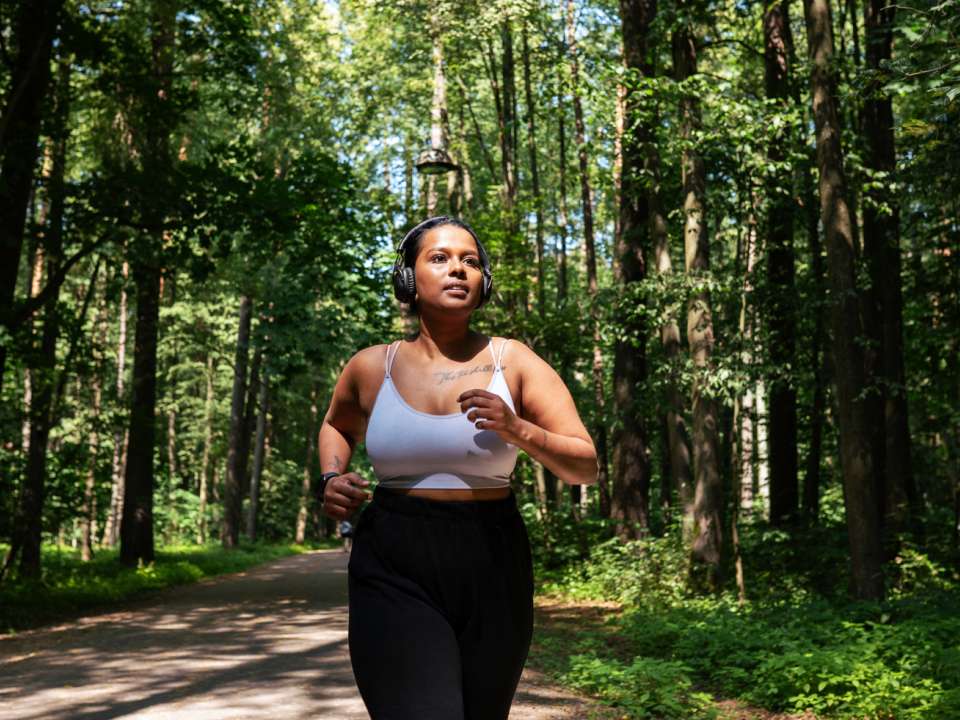This Is Why You Have Sore Muscles Two Days After You Work Out

If you’ve ever exercised intensely after taking some time off—or you just tried a boot camp class at your gym for the first time—you know that you’re likely to feel pretty sore the next day. The pain you feel that leaves you waddling around—and can feel even worse two days after a workout—is thanks to a phenomenon known as delayed onset muscle soreness, or DOMS.
So why exactly do you feel sore the next day, instead of right away? Here’s what you should know about DOMS—and when you should be concerned about that second-day ache.
What Is DOMS?
Sometimes you’ll feel some soreness or achiness during a workout — it means you’re pushing your body a little but not too much.
Unlike acute soreness, delayed soreness usually begins 24 to 48 hours after your workout.
“Delayed onset muscle soreness is associated most with eccentric exercises, where you’re putting a load on a muscle while lengthening it, such as when you stretch out your arm after a bicep curl,” says Dr. Eric Chen, a UW Medicine physiatrist who specializes in sports medicine.
Muscle soreness is especially common after doing a workout you’re not used to, which is why if it’s been months since you last went hiking and you decide to trek to Mailbox Peak your first day out the gates, you’ll probably pay for it for the next few days.
What causes delayed onset muscle soreness?
Soreness is caused by microtears or minor inflammation in your muscles. That might sound alarming, but in reality it’s a good thing because it prompts your muscles to heal and adapt, which strengthens them.
Delayed soreness is different because, well, it’s delayed. It happens after a workout, not during one. Why is that? Well … that’s a good question.
“It’s an interesting phenomenon because no one knows the true answer. There are several theories, including micro-trauma to the muscle, lactic acid buildup, release of muscle enzymes, muscle spasms, connective tissue damage or muscle inflammation,” Chen says. “The general consensus is that delayed onset muscle soreness is not due to any one of those things but several.”
What are the best ways to heal sore muscles?
Delayed onset muscle soreness can last anywhere from a few days to a couple of weeks. It should slowly improve over that time. Still, if it’s bothering you, there are a few things you can try to ease the ache.
“Research has shown that these things didn’t shorten the period of time where someone is experiencing the soreness but made them feel better in the meantime,” Chen says.
Try active recovery
You may think you should refrain from using your sore muscles until they heal. However, Chen says that many people actually find it helpful to take an active recovery approach, where you work the muscles lightly.
“People say it helps reduce short-term pain and feels better than not moving the muscle at all,” he says.
After the initial tender phase, try some light exercise that will engage the sore muscles, like gentle yoga, a walk or a slower swim.
Do some stretching
You can try this along with a foam roller, perhaps, or just stick to the type of stretching you do during your typical warmup or cool-down. You can try a mixture of dynamic stretches, like a forward bend, and static stretches, like a classic hamstring stretch sitting down and stretching your leg out while holding your foot.
Massage those muscles
You could do this yourself with a foam roller or enlist the help of a massage therapist. Either way, make sure the massage is on the gentler side.
Use hot or cold therapy
Either will work; pick the one you prefer, whether that’s a heating pad or a cold pack. Cold will help reduce any inflammation you may have whereas hot will increase blood flow and reduce stiffness.
When should you see a doctor about muscle soreness?
Delayed onset muscle soreness is not dangerous and should resolve within, at most, a couple of weeks. If it doesn’t, that’s a good time to talk with your doctor about what else could be going on, like a sprain or strain.
DOMS also shouldn’t be so painful that it prevents you from doing everyday activities. If it is, or if you have symptoms like dark urine, muscle cramps or fatigue, you should go to the doctor right away. These symptoms could be from a rare but dangerous condition called rhabdomyolysis, or rhabdo, in which proteins can leak out of damaged muscles into your blood. Rhabdo can cause serious issues like kidney damage.
Typically, rhabdo is caused by intense workouts (think high-intensity interval training, aka HIIT, or CrossFit). And while you probably won’t get it, it’s not a bad idea to be aware of the symptoms just in case. (Rhabdo can turn into a medical emergency, so if you have symptoms, call 911 or go to the emergency department.)
Is it possible to avoid sore muscles after working out?
There are a few things you can do to prevent soreness, such as pacing yourself, trying new exercises in moderation to give your body time to adjust, and slowly increasing the intensity of your workouts rather than diving in full force.
To some extent, though, experiencing a little soreness is just part of the package, especially if you’re the kind of person who likes to push yourself a little bit and try new routines.
“It’s just a natural part of working out, a reaction all of our bodies have to exercise,” Chen says. “Delayed soreness can be uncomfortable but generally gets better over time and becomes less frequent.”
Editor's note: This article was originally published on September 4, 2017. It has been reviewed and updated with new info. Kristen Domonell and McKenna Princing contributed to this article.

 Healthy ideas for your inbox
Healthy ideas for your inbox





